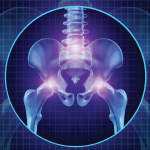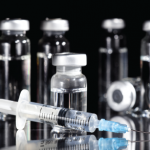Lateral epicondylalgia can be frustrating for both the patient and physician. Conflicting evidence exists for the roles of physical therapy (PT) and corticosteroid injection in lateral epicondylalgia.1-2 Anecdotally, the rheumatology division here at Brigham and Women’s Hospital has noted worse outcomes, such as recurrence and persistent pain, in patients who received corticosteroid injections. However, the evidence to support opinions on PT and corticosteroid injections has been lacking.
Researchers in Australia, led by Brooke Coombes, PhD, explored outcomes in patients with chronic unilateral lateral epicondylalgia in a study recently published in the Journal of the American Medical Association.3 This randomized controlled trial used a 2×2 factorial design so that the 165 participants were randomized to receive either placebo (consisting of normal saline) or corticosteroid injection and also randomized to receive either PT or no PT. The injection arm of the trial was double blinded, while the PT was open label. The primary outcomes were measures of recovery and recurrence assessed at one year. Secondary outcomes were measures of function assessed at 4, 26, and 52 weeks.
The study had impressive follow-up, with 98% of participants completing the one-year study. For the primary outcome, participants who received placebo had a much lower risk of recurrence compared to corticosteroid injection at one year; the result was statistically significant (relative risk 0.23, 99% confidence interval 0.10–0.51). For those who were randomized to receive either PT or no PT, there was no statistical difference in rates of recurrence at one year.
In secondary analyses for the injection arms of the study, those who received a corticosteroid injection and no PT had slightly better functional status at four weeks, but this result reverses at 26 weeks when those who received placebo injection fared better than corticosteroid injection. For functional status, subjects who received placebo or corticosteroid injections fared similarly at one year. For PT, there was a slight, but statistically significant improvement in those patients who received placebo injection at four weeks, but measures of function were similar in the PT vs. no PT groups at 26 and 52 weeks.
There were few adverse events in the study, mostly consisting of skin depigmentation and atrophy in those who received corticosteroid injections. Overall, participants in this study did well, with 90% reporting much improvement in lateral epicondylalgia symptoms.
The authors conclude that for unilateral lateral epicondylalgia, corticosteroid injection resulted in worse clinical outcomes compared to placebo injection and that there were no significant differences in those who received PT or no PT.
The authors suggest that corticosteroid injection may provide local transient analgesia that encourages overuse while also negatively affecting collagen remodeling. This study provides convincing evidence that for this population of patients, corticosteroid injection offers no long-term clinical benefit and, in fact, clinical outcomes are worse in the long term.
It is tempting to wonder whether similar results might be observed for other common sites of injection for local joint syndromes such as anserine or trochanteric bursitis. While long-term outcomes were worse for corticosteroid injected patients in this study, there were statistically significant improvements in function at four weeks, so there may still be a role for corticosteroid injection in lateral epicondylalgia in select patients.
Lateral epicondylalgia is likely to remain frustrating to both patients and physicians, but decisions on PT and corticosteroid injection can now be made with appropriate evidence to support a clinical decision.
Dr. Sparks is a rheumatology fellow at Brigham and Women’s Hospital in Boston.
References
- Bisset L, Beller E, Jull G, Brooks P, Darnell R, Vicenzino B. Mobilisation with movement and exercise, corticosteroid injection, or wait and see for tennis elbow: Randomised trial. BMJ. 2006;333:939.
- Hay EM, Paterson SM, Lewis M, Hosie G, Croft P. Pragmatic randomised controlled trial of local corticosteroid injection and naproxen for treatment of lateral epicondylitis of elbow in primary care. BMJ. 1999;319:964-968.
- Coombes BK, Bisset L, Brooks P, Khan A, Vicenzino B. Effect of corticosteroid injection, physiotherapy, or both on clinical outcomes in patients with unilateral lateral epicondylalgia: A randomized controlled trial. JAMA. 2013;309:461-469.

